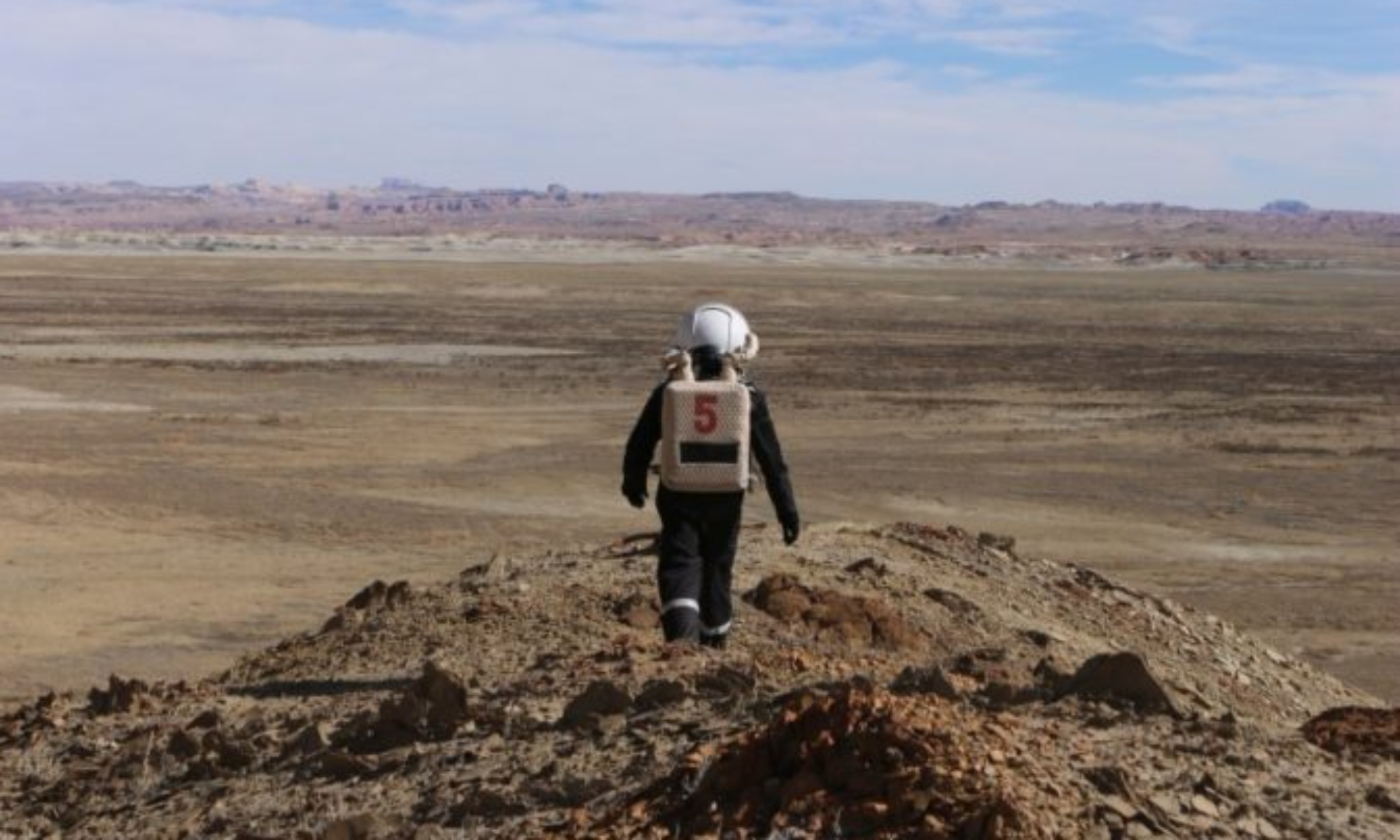Mon 11 Nov Sol 1
by Guy Murphy
This morning we woke up on Mars. We emerged from our sleeping quarters at 7 am to views of the Sun rising across an alien landscape through the upper-level Hab windows. For the next 12 days, we are in full simulation mode (sim). We do not go outside of the designated pressurised areas of the campus unless wearing space suits and following a depressurisation protocol. We have to make do with the supplies we have, and undertake our research projects and Hab maintenance while not breaking sim.
The crew is following a set daily schedule over the course of the mission, which includes rising at 7 am and lights out at 10 pm. This is to keep everyone working together on the same sleep cycle, and get the most of the available daylight hours.
We are fortunate to have relatively warm, clear and dry days forecast for the next fortnight. Typically in this part of Utah it is much colder at this time of year, with greater odds of precipitation.
The first EVA (Extra-Vehicular Activity) onto the Martian surface was completed this morning, with Larissa and Jennifer taking their first steps on another world.
The 11th of November is Remembrance Day in Australia and New Zealand. As is customary, the crew stopped while out in the field for a minute of silence at 11 am to honour Australian and New Zealand service men and women.
For lunch, we consumed the remaining spaghetti Bolognese from last night. Early afternoon, I showed the new crew how to make butter, cheese, and bread from the various dry ingredients in our stores. The bread machine is proving its worth.
On a long-duration mission with a limited pantry, we both crave novelty and must avoid wasting food products. Larissa is experimenting with creating a vegetarian mock pulled pork dish derived from banana skins. She has candied some orange and mandarine peel to include in a fruit bread she will bake tomorrow.

